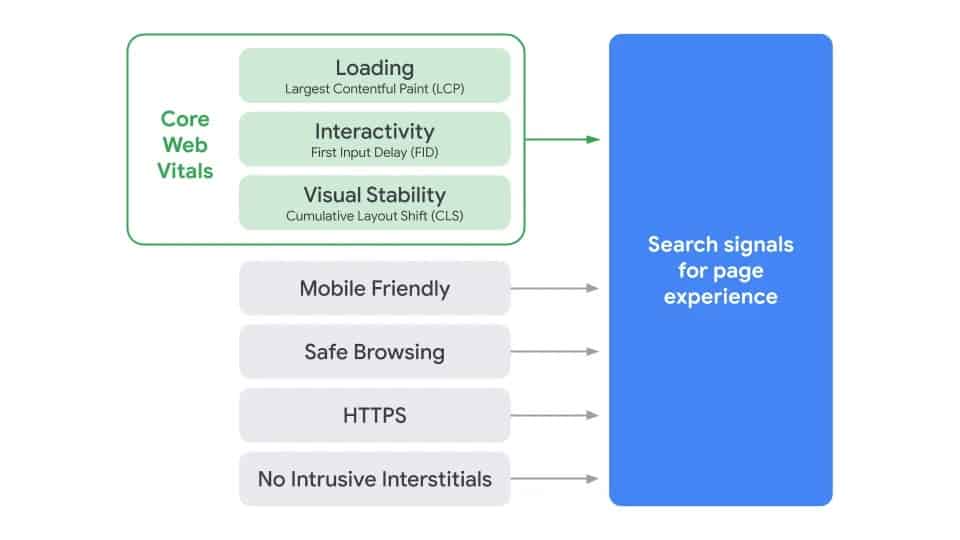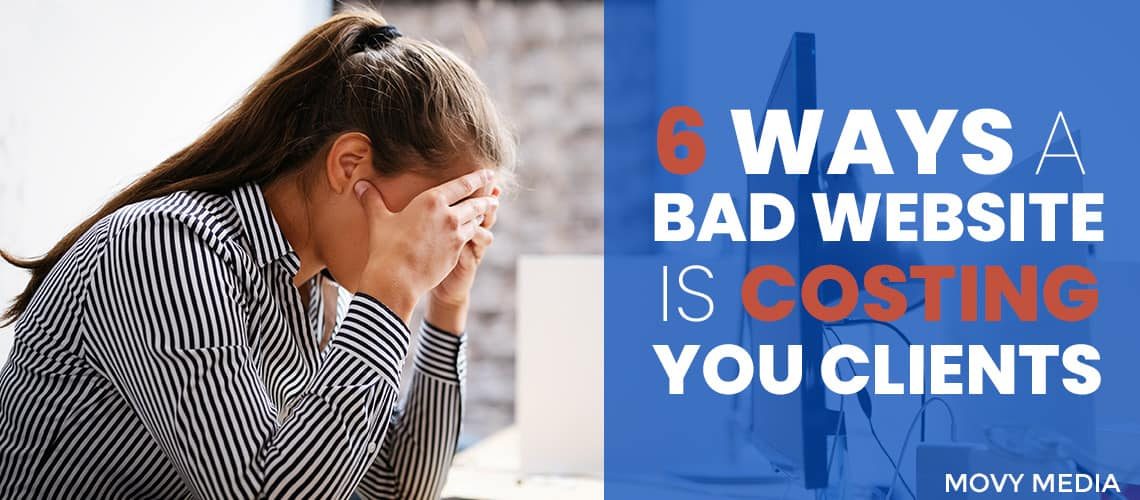The Importance of a Great Website
Is there any importance to having a terrific website, you might ask?
I mean, if the purpose of a website is to pass information across to a visitor, does it even matter how aesthetically pleasing the site itself is? Isn’t the most crucial thing the message itself?
Well, yes, and no. It pays to have a website with a great message or product to sell. But the packaging with which you display that message and information is just as important.
After all, your web presence is the first interaction most people will have with your business.
Your Website is More Than Just a Message

It is all too easy to think that the only important thing is delivering a message or content in the boldest way possible. In practice, though, things don’t work this way.
If it did, all we’d have to do to generate huge sales is to write our copy in all caps with a 50pt font on a website and be done with it.
However, a great site not only helps you get your message across, but it also enables you to deliver it in an efficient, aesthetically pleasing way that reflects the professionalism and authority of your business.
How Much Does Poor Web Design Really Impact Your business?
A lot. Poor web design impacts your business in a lot of negative ways. Here are some interesting statistics to put this into perspective:
- Adobe published a report showing that 38% of people choose to stop engaging with a website if they find the content and layout to be unattractive.
- And in case that isn’t scary enough, a study by The Gomez Report in 2010 found that 88% of customers who have a bad experience navigating a website do not return to the site.
So yes, poor web design takes a significant toll on businesses. Think about the money being left on the table.
As business owners, we would shudder at the idea of a customer not being able to spend money with us when they want to. The reality is this happens with poorly designed websites ALL the time.
Visitors coming to learn about your business are frustrated with how difficult your site is to use and promptly leave to go to a competitor’s website.
Let’s dive in further.
1. The Evolution of Consumer Expectations

In 2020, a beautifully designed website that is responsive on all devices, has excellent ease-of-use, and provides potential clients with the information they are looking for fast is an EXPECTATION.
Does your website fall short in any of those factors? If so, the chance of losing the engagement of your visitors can only increase.
Stanford University’s Web Credibility study found that 75% of consumers admit to making judgments on a company’s credibility based on the company’s website design.
An incredibly powerful statistic and I even feel that 75% is still generous. Put yourself in the shoes of a potential client and what they may think when they come to your website that screams 2007.
“If they can’t even invest in modernizing their web presence, what other ways are they cutting corners in their business?”
Again, this may seem almost superficial on the surface. I mean, why would the merit of a whole business be judged based on the quality of a website alone?
It may seem a bit harsh, yes, but that is how it is.
It may be helpful, though, to think of your business website as a gatekeeper instead of a gateway – as a gatekeeper who welcomes new customers and shows them around on a luxury tour.
It’s about both the experience and the content on the site. But most importantly, a smooth, frictionless experience to FIND the exact content the visitor is looking for.
Now, while having a great gatekeeper isn’t the absolute most important factor, it at least guarantees that customers stay to have a look around.
Having a terrible gatekeeper, on the other hand, ensures that they leave without even finding out what you have to offer.
2. People are busy and Inpatient – The Importance of Ease-of-Use

Just as the expectations of great website design are higher than ever, people are busy and need the information they are looking for now.
If it takes your visitors a long time to find your contact information, or if they have to jump through hoops to see your pricing, you’ll lose them fast.
77% of agencies believe that a bad website User Experience is a weakness for their clients.
In other words, most marketing agencies found that the biggest problem with their clients’ websites is that they are just a pain to use and navigate.
Think about this scenario; you are spending thousands of dollars a year on Google & Facebook Ads to drive traffic back to your website to convert new sales.
Since the website is frustrating and hard to use, your conversion rate of that ad is currently around 1%, or let’s say 1 in 100 visitors convert on your intended action.
What if you optimized your site to follow conversion best practices so that it’s easy for them to learn everything about your service?
Let’s say after making these changes; you boosted your conversion rate to 3% or 3 in 100 visitors; this is a substantial difference in the effectiveness and bang for your buck on your ad spend.
Even if the site is beautiful with a great looking design, a frustrating UX (user experience) will still significantly hurt your business in the long run.
Great design and user experience go hand in hand and MUST work together.
3. The World has Gone Mobile

Mobile responsiveness – or the lack of it – has shot right up to the apex of what makes a terrible website. Not too long ago, nobody really cared how a website looked on mobile devices.
Nowadays, however, this would not fly. Having to pinch the screen to adjust the zoom of the site, or one that has a left and right scroll on mobile is no longer acceptable.
Not only do you need to ensure that your content is responsive for mobile and tablet, but you also have to ensure the useability is a different and satisfying experience entirely.
Let’s use the navigation menu as an example. On a desktop version of a site, a horizontal menu with drop-downs is perfectly acceptable. However, this would be a terrible experience for touch-screen.
A mobile version should use something like a hamburger menu that unfolds and displays all of the pages for a user to navigate. Or even a flyout menu that acts similarly.

Mobile responsiveness goes beyond just the nav menu; all parts of your website should have mobile in mind, like your footer, layouts, font sizes, images, and beyond.
Why spend so much trouble on serving content for mobile users?
• More than 50% of total online traffic, worldwide, came from mobile devices.
• More than 40% of purchases online take place on mobile.
• Most people spend an average of 5 hours every day on their smartphones.
And if your website isn’t optimized for mobile devices, you will have some serious negative repercussions on sales and conversions.
4. There’s No Second Chance at a First Impression

The literal first impression that your website gives to visitors determines how they will view your business in its totality, and that’s no exaggeration.
Your online presence is the first ‘face’ of your business.
A study carried out found that it took 50 milliseconds (half a second) on average for visitors to leave a website they did not find appealing enough.
Of course, this would be less terrifying if there was a second chance to make things right. Sadly, there isn’t.
Not only does your first impression determine whether people stay or leave your website in the first few seconds, but it also might decide if they will ever come back to it.
88% of online customers interviewed in a survey attested to never returning to a website after a bad experience. And why should they?
All it takes is a glance to decide if it’s worth it to continue learning about your business.
An unappealing, clustered layout, little or low-quality content, subpar graphics, and font – all are tangible reasons why a bad website can cost you clients in less than a second.
5. Slow Page Load Times

You know how visitors leave websites almost instantly after a bad experience? Well, some might even leave without having any experience at all.
The page load speed of your website is hugely important, and you have a minimal window of time before your visitor calls it quits.
And how long is this limited amount of time?
About 3 seconds. That’s it.
Google found that as the page load time extends to 5 seconds, the probability of the visitor bouncing increases by 90%.

Source: Google/SOASTA Research, 2017.
Imagine spending a lot of time and money, setting up the perfect website only to lose many of your potential customers before they even view it.
Here are a few more statistics on the importance of site speed:
- 47% of users expect a 2 second loading time for an average website.
- Slow-loading websites cost retailers $2.6 billion in lost sales each year
- The average load time for mobile sites is 15 seconds.
Many technical aspects go into improving a website’s page load speed, but if you want to see how your site performs without the confusing jargon, try out Pingdom’s Speed Test.
Load time is a piece of a user’s experience BEFORE they even view your website, making it an essential part of your website’s reputation to both potential clients and in the eyes of Google.
6. Search Engines’ Expectations Have Evolved Too

The proficiency of search engines to differentiate between terrible websites and great ones has come a long way over the years.
Back in the early days of the internet, it used to be that you could slap a few make-shift websites together, give a few links between them, stuff them full of as many keywords as you can, and find yourself ranking at the top of every query results.
Nowadays, however, Google’s criteria for good content grows more and more strict.
Since they, too, are all about giving customers the highest level of satisfaction with their search results, they only want to serve the best websites that can match the user’s intent.
Artificial intelligence is now able to discern whether or not your elements are readable or too close together, optimized for mobile or not, and even determine your website load speed and rank you accordingly.
Just in May, Google signaled that Page Experience would become a ranking factor, comprised of; mobile-friendliness, page speed, https-security, intrusive interstitials, and safe browsing penalty.

Not only do consumer expectations of great websites evolve, so doesn’t the search engine’s abilities to reflect those expectations in how they rank websites.
Turn the Bad into Good – Recognize Your Website’s Potential
From the above, it is evident that as technology keeps evolving, so does our definition of a bad website.
What used to be a model website back in the days is sadly not enough to be considered even average these days.
And while this is generally a great thing for consumers and the internet as a whole, it is usually bad news for those who don’t progress with the curve.
To take advantage of the shift, though, and stay ahead of the curve, recognize the issues and start taking the appropriate steps to fix them.
Whether that means taking the time to learn how to make improvements on your own or hiring a reputable web design agency that will take care of everything for you, it’s super important to continually improve your website.
If factors such as load speed, mobile responsiveness, impressive UX, and easy navigation are all things that contribute to a terrible website, it follows that improving massively on these factors will constitute a brilliant one.
To your Success,

